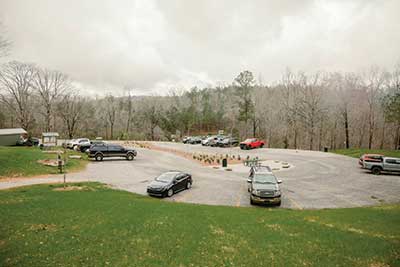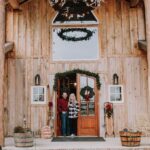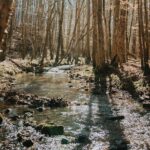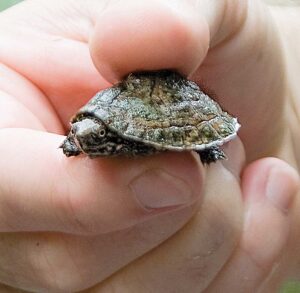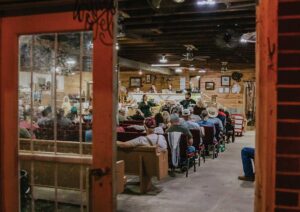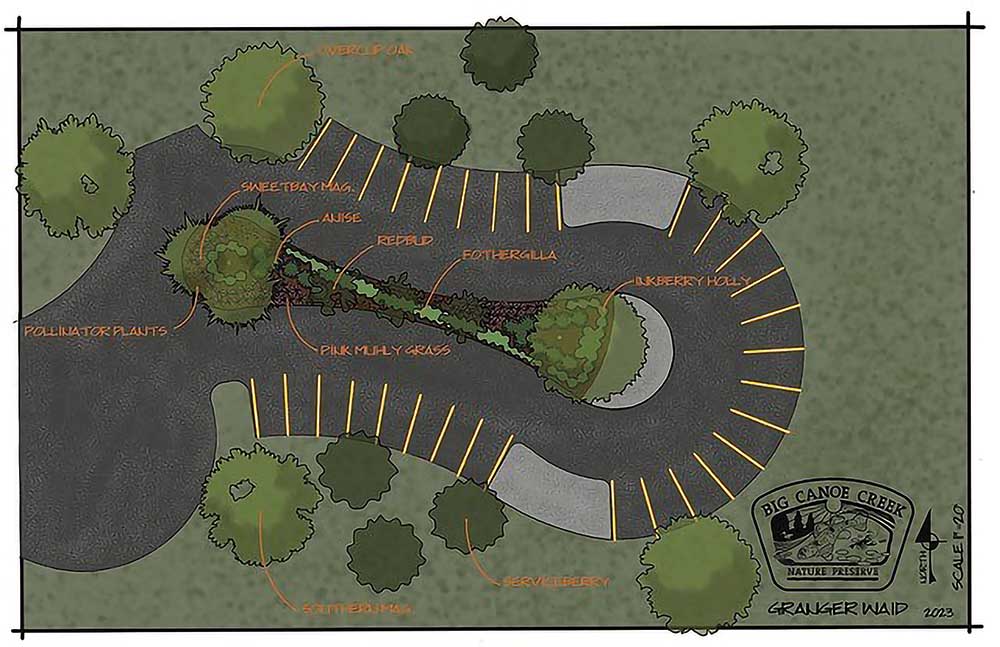
Landscaping to protect and preserve
Story by Roxann Edsall
Photos by Mackenzie Free
and Roxann Edsall
Submitted photos
It may look like just an ordinary landscaping job to many who park at the Big Canoe Creek Nature Preserve in Springville. There, in the middle of the parking area, is an island of landscaping. Lovely, but on the surface, unremarkable. It is, however, quite remarkable.
This is a bioswale, a highly efficient and aesthetically pleasing landscape engineering tool, whose job is to control stormwater and its resulting erosion and to limit the transference of pollutants. It functions a bit like a stormwater detention basin, but it looks far better.
Why is it needed? In areas with solid surfaces, like roads, driveways, and like BCCNP’s parking lot, storm water is not able to soak in, so it runs off, taking pollutants like oils, pesticides, micro garbage and cigarette butts with it. With enough rain, the volume of water takes these pollutants to grassy areas and to creeks.
Enter the bioswale. Graded to be lower than the rest of the parking area, it is essentially a trench, into which all the rainwater funnels. The trench contains perforated drainage pipes and layers of gravel, sand and organic materials to filter the pollutants before they are absorbed into the ground soil.
Flood and drought resistant plants are then placed into the area to keep the filter materials in place. Domed metal grates are tucked into planting areas on either end of the planting area to handle extreme volumes of water.
Granger Waid, vice president of Norris Paving and Excavating, worked with Joey Breighner and Schoel Engineering on the design and installation of BCCNP’s bioswale.
Waid used both his work experience with concrete and asphalt surfacing and his degree in Horticulture and Landscape Design to come up with a different design for the parking lot that would be both attractive and functional. “I drew it up with the help of Joey,” explains Waid. “We then were able to make my two-dimensional drawing into a three-dimensional one, so we could just plug it into a bulldozer, and it automatically graded the parking lot that way.”
Breighner and his crew gave Waid detailed specifications for the soil mixture to put on top of all the drainage layers. This “dirt recipe” was designed specifically for the native redbuds, sweet bay magnolias and pink muhly grass. Because it is a Forever Wild property, only plants approved as native to the state by a botanist from the Alabama Department of Conservation and Natural Resources were allowed.
Since this bioswale is in the middle of a parking area in a remote setting, the plants had to be drought tolerant, but be able to survive in standing water. And they had to look good from all angles and in all seasons.
They do look good, but understanding the greater purpose makes them even more interesting.
Waid and the team at Big Canoe Creek Nature Preserve are working on a documentary on the bioswale and its function. Soon, visitors will be able to scan a QR code on a sign to connect to that information.
This landscape area is definitely not just a pretty space.
Editor’s Note: You can view the documentary at











